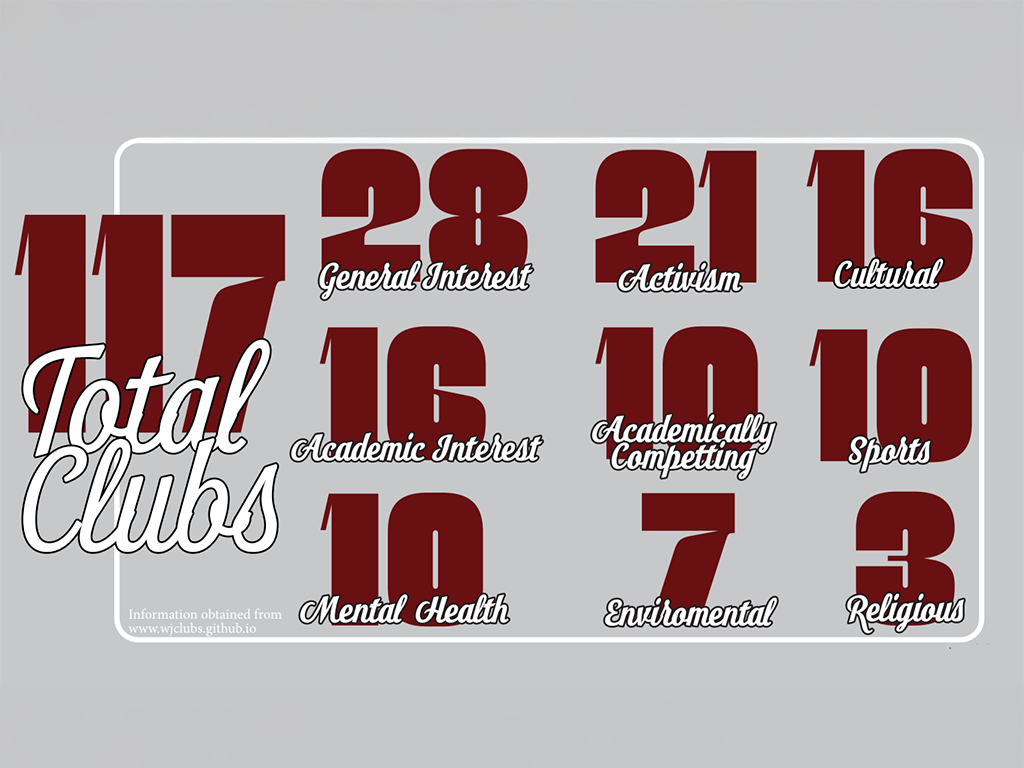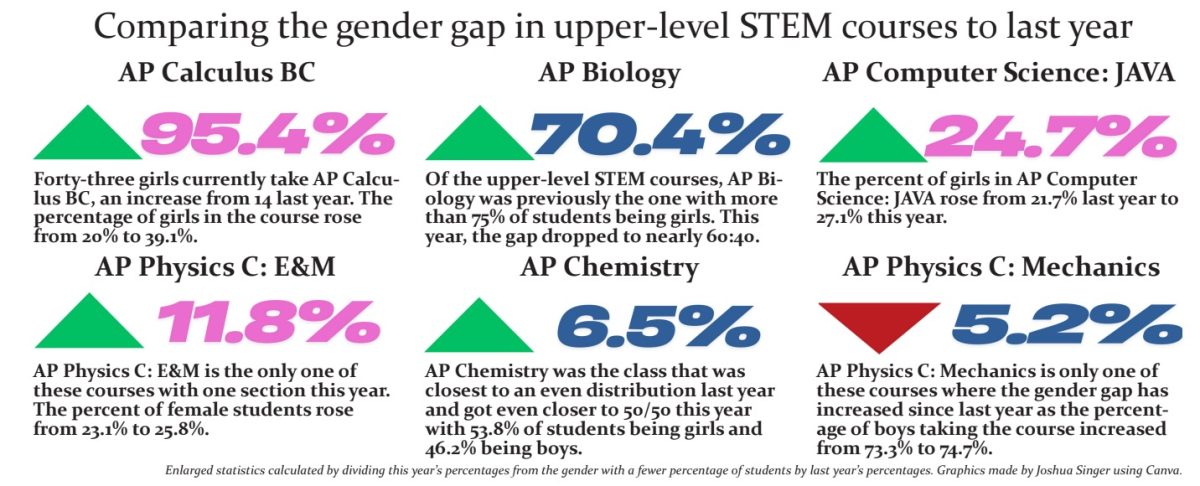While an abundance of clubs can be an indicator of high student achievement, too many clubs can defeat the purpose of student organizations. In 2010, WJ had 70 clubs, but today, over 115 clubs reside in the halls of WJ. One of the main causes of this increase has been the duplication of clubs, particularly among those that focus on mental health, activism and the environment. Consolidation of clubs with similar purposes can increase the impact of student organizations, both inside and outside of WJ.
At WJ, many individuals and entire friend groups have created clubs in order to put themselves in leadership positions due to, among other things, the ease of creating a new club. While forming a club should not be extremely difficult, the process is too easy. Students are only required to have a club sponsor and four members to fulfill the four mandatory leadership roles (president, vice president, secretary and treasurer). While they must define their purpose, there is zero oversight from administration or student leadership regarding repetitive mission statements, leading to many unnecessary clubs being formed just for leadership titles. Moreover, there is no supervision to determine if clubs are actually meeting, having events with members or fulfilling their mission statement. Instead of joining existing clubs, many students begin their own copy of a copied club with the sole purpose of contributing to their resume, ultimately decreasing the impact made by WJ clubs in our community. This isn’t supposed to be the true purpose of extracurriculars.
The Evolving College Landscape and Its Impact:
A huge reason for the duplication of clubs has been the college application landscape, as participation and leadership roles in clubs have become increasingly expected in the college admissions process. Unfortunately, this trend has altered the objective of clubs, from students joining due to genuine interest and passion to joining in order to check off a box.
Universities want students who genuinely care about their community and those around them; however, when a club is made solely for college applications, it tends to have the opposite effect. This phenomenon is particularly prevalent in clubs that focus on activism, charity and the environment. For example, there are seven clubs that center on the environment, but these seven clubs could be consolidated into two or three. By doing so, the seven clubs could combine their manpower, funds, resources and connections to widen their impact. While this would decrease the number of students in leadership positions, it would make the influence of these clubs greater, bringing back the true purpose of environmental clubs.
Even though WJ has 117 clubs, only around 10 of those clubs compete academically. While extracurriculars should be fun, there is a lack of academically competitive clubs at WJ. There are 18 clubs that focus on charity and activism at WJ and over 40 that focus on students’ interests. Even though student groups that engage with and improve our wider community are important, many of these clubs can be consolidated, freeing up teacher sponsors and resources provided by WJ.
Cultural & Special Interest Clubs:
Unlike other student organizations, cultural clubs such as the African Student Union, Ukrainian Club and Middle Eastern North African Club truly serve their purpose within the WJ community and rarely feature duplication. With each club having a focus on welcoming and celebrating the culture of its members, the clubs bring those from the same background together among the swarm of the 3,028 students at WJ. Cultural clubs tend to have numerous dedicated members, some of which host cultural events such as student assemblies. Moreover, many cultural clubs from the same region combine and host events such as the Asian Assembly, which includes the Asian American Student Union (AASU), Southeast Asian Student Union (SASU) and South Asian Student Union.
The same goes for special interest clubs, such as the WJ Fashion Club and Astronomy Club, which bring together students with similar interests. While their events may be smaller, their members are often committed, and once again, duplication is infrequent. These clubs allow students with a genuine interest in a topic to explore it within the walls of WJ with their peers, fostering a greater understanding and interest in the subject as well as creating friendships. However, it should be noted that some special interest clubs can also be combined into one, such as the three coding and website development clubs.
Is it just an illusion?
Many WJ students boast about their involvement in many clubs, but is that the reality for all students? Oftentimes, the same students are heavily involved in numerous clubs. However, many students are left out. Instead of students creating more and more clubs focused on the same issues, a greater push for all students to engage in the WJ community should be made, both culturally and formally. By decreasing duplication, increasing the resources of clubs as well as encouraging student involvement within WJ, strides can be made towards WJ clubs serving their true purpose: bringing together students with similar interests and helping our wider community.
Student organizations can regain their purpose and reach in our wider community by combining with clubs that focus on similar interests or issues. By doing so, not only will the impacts of WJ clubs be deeper and wider, but they will also serve to bring back the true purpose of student clubs.









